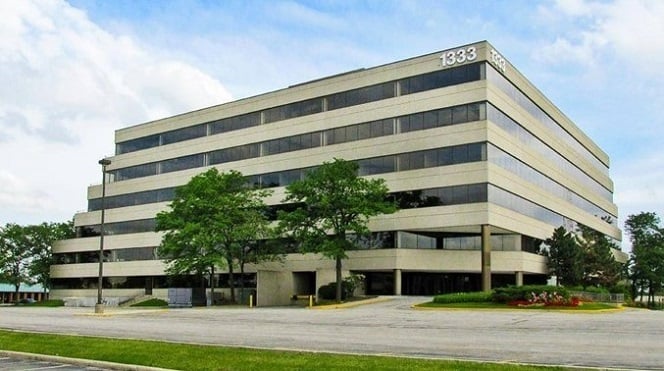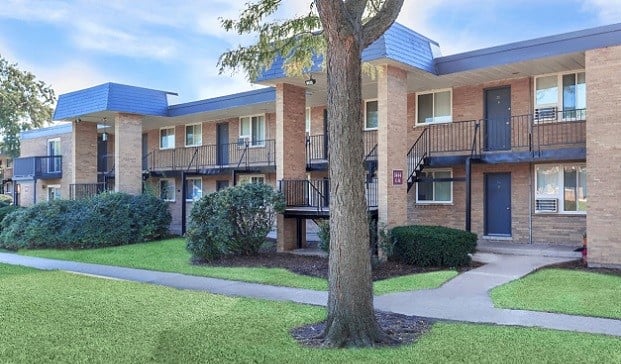
MADISON, NJ—The end users of office space, i.e. the people who work in an office environment day-to-day, have clear preferences about this space, according to a newly released survey conducted by Coldwell Banker Commercial Affiliates. Sixty-three percent of employed US adults believe that their office could better utilize its physical space, while 34% say improvements could be as simple as a better floorplan.
The survey was conducted for Coldwell Banker Commercial Affiliates by Harris Poll, and sounded out 2,000 adults including Younger Millennials (ages 18-29), Older Millennials (30-34), Gen Xers (ages 35-49) and Baby Boomers (50-69). As Fred Schmidt explains, the findings have strong implications for employers, leasing brokers and developers. The Coldwell Banker Commercial Affiliates president and COO spoke with GlobeSt.com in connection with the survey.
GlobeSt.com: Looking at the responses among different age cohorts, are there clear patterns in terms of their preferences? For example, younger Millennials are least likely to respond that they would favor an improved floor plan; what's behind this?
Fred Schmidt: As with most things these days, Millennials aged 18-34 appear to be the tastemakers molding office space trends. We found that a vast majority of both Younger and Older Millennials believe that their offices could better utilize physical space, and our survey dug deeper to find which amenities workers really wanted in their offices. We wanted to see beyond the headlines about napping rooms and foosball tables at the office and get to the core of what is a “must” in today's office. It was also important to get to the bottom of what the next generation of workers are interested in, as this will impact commercial office space moving forward.
We found that Millennials are demanding features like parking, food options and outdoor lounge spaces. What this tells us is that Millennials across the spectrum value convenience and communal spaces. Opting to eat lunch in the office cafeteria or spend time in an outdoor lounge space points to the fact that our Millennial cohorts in the office value spending time with their colleagues and getting to know each other.
If we look deeper at the Millennial group, Younger Millennials aged 18-29 were least likely to favor an improved floorplan and this may be because their careers are just blossoming, and they might have only known one office type. What does stand out is that nine in 10 Younger Millennials noted they are most comfortable with open floorplans if private space is available to them.
This hints at a delicate balancing act that commercial real estate professionals will need to keep in mind. The next generation of workers is looking for togetherness and communal spaces, but they also demand private spaces where they can get away from the hustle and bustle of the office.
GlobeSt.com: Had this survey been conducted a few years ago, would the results among different age groups have been markedly different?
Schmidt: I think there could have been different results, but overall I think certain trends are merely preferences that are based on where you are in your career. For example, I think that older workers across generations, who might have reached a level of seniority in their organizations will always prefer a private office over a cubicle in order to take important meetings and duck away from the office rush, regardless of when this survey may have been taken.
A few years ago, open floorplan concepts were in vogue because of their efficiency and the ease of which developers could repurpose space between tenants. As people have gotten to work in these environments, I think workers have shied away from the open floorplan and developed a need for private space to give them the ability to hunker down on an assignment or take a phone call away from the open floor buzz, so it is possible that these responses could have varied years ago.
Overall, I think that parking still would have been the most sought after amenity if this survey were taken one, five or 10 years ago, especially among adults that work far from urban metros or who do not have public transportation available. This might change moving forward as society adopts more public transit, and as workers continue to flock to cities.
GlobeSt.com: What kinds of actionable results can office-using clients take away from this survey, in terms of serving office tenants today? In terms of planning for the future? How will your firm's professionals advise their clients in view of these survey results?
Schmidt: Clients and commercial real estate professionals alike need to remember that Millennials have officially overtaken Baby Boomers as America's largest generation—and most adults in this generation are already in, or soon entering, the workforce. It is important to keep a pulse on what they want, and to also plan for the future demands of Gen Z-ers, who are high-school and college-aged and soon will be among the US workforce too.
Tenants and clients know that their office often makes a first impression when new candidates walk through the door for an interview. Attracting and retaining talent is rooted in the benefits their employers offer, but it is also important to remember that employees will be spending around 40 hours a week in their physical workspaces, which adds up to a significant amount of time over the course of a career. Making sure that your staff is satisfied in their workspaces and have the amenities they need is a big part of attracting and retaining staff.
It is important for all commercial real estate professionals and developers alike to keep these preferences in mind and advise their clients about how to reconfigure space to attract and retain workers. In today's competitive job market, it is important for offices to be modern, accommodating and attractive to the next generation of workers, who have demonstrated their varied tastes in and demands from office space.

MADISON, NJ—The end users of office space, i.e. the people who work in an office environment day-to-day, have clear preferences about this space, according to a newly released survey conducted by Coldwell Banker Commercial Affiliates. Sixty-three percent of employed US adults believe that their office could better utilize its physical space, while 34% say improvements could be as simple as a better floorplan.
The survey was conducted for Coldwell Banker Commercial Affiliates by Harris Poll, and sounded out 2,000 adults including Younger Millennials (ages 18-29), Older Millennials (30-34), Gen Xers (ages 35-49) and Baby Boomers (50-69). As Fred Schmidt explains, the findings have strong implications for employers, leasing brokers and developers. The Coldwell Banker Commercial Affiliates president and COO spoke with GlobeSt.com in connection with the survey.
GlobeSt.com: Looking at the responses among different age cohorts, are there clear patterns in terms of their preferences? For example, younger Millennials are least likely to respond that they would favor an improved floor plan; what's behind this?
Fred Schmidt: As with most things these days, Millennials aged 18-34 appear to be the tastemakers molding office space trends. We found that a vast majority of both Younger and Older Millennials believe that their offices could better utilize physical space, and our survey dug deeper to find which amenities workers really wanted in their offices. We wanted to see beyond the headlines about napping rooms and foosball tables at the office and get to the core of what is a “must” in today's office. It was also important to get to the bottom of what the next generation of workers are interested in, as this will impact commercial office space moving forward.
We found that Millennials are demanding features like parking, food options and outdoor lounge spaces. What this tells us is that Millennials across the spectrum value convenience and communal spaces. Opting to eat lunch in the office cafeteria or spend time in an outdoor lounge space points to the fact that our Millennial cohorts in the office value spending time with their colleagues and getting to know each other.
If we look deeper at the Millennial group, Younger Millennials aged 18-29 were least likely to favor an improved floorplan and this may be because their careers are just blossoming, and they might have only known one office type. What does stand out is that nine in 10 Younger Millennials noted they are most comfortable with open floorplans if private space is available to them.
This hints at a delicate balancing act that commercial real estate professionals will need to keep in mind. The next generation of workers is looking for togetherness and communal spaces, but they also demand private spaces where they can get away from the hustle and bustle of the office.
GlobeSt.com: Had this survey been conducted a few years ago, would the results among different age groups have been markedly different?
Schmidt: I think there could have been different results, but overall I think certain trends are merely preferences that are based on where you are in your career. For example, I think that older workers across generations, who might have reached a level of seniority in their organizations will always prefer a private office over a cubicle in order to take important meetings and duck away from the office rush, regardless of when this survey may have been taken.
A few years ago, open floorplan concepts were in vogue because of their efficiency and the ease of which developers could repurpose space between tenants. As people have gotten to work in these environments, I think workers have shied away from the open floorplan and developed a need for private space to give them the ability to hunker down on an assignment or take a phone call away from the open floor buzz, so it is possible that these responses could have varied years ago.
Overall, I think that parking still would have been the most sought after amenity if this survey were taken one, five or 10 years ago, especially among adults that work far from urban metros or who do not have public transportation available. This might change moving forward as society adopts more public transit, and as workers continue to flock to cities.
GlobeSt.com: What kinds of actionable results can office-using clients take away from this survey, in terms of serving office tenants today? In terms of planning for the future? How will your firm's professionals advise their clients in view of these survey results?
Schmidt: Clients and commercial real estate professionals alike need to remember that Millennials have officially overtaken Baby Boomers as America's largest generation—and most adults in this generation are already in, or soon entering, the workforce. It is important to keep a pulse on what they want, and to also plan for the future demands of Gen Z-ers, who are high-school and college-aged and soon will be among the US workforce too.
Tenants and clients know that their office often makes a first impression when new candidates walk through the door for an interview. Attracting and retaining talent is rooted in the benefits their employers offer, but it is also important to remember that employees will be spending around 40 hours a week in their physical workspaces, which adds up to a significant amount of time over the course of a career. Making sure that your staff is satisfied in their workspaces and have the amenities they need is a big part of attracting and retaining staff.
It is important for all commercial real estate professionals and developers alike to keep these preferences in mind and advise their clients about how to reconfigure space to attract and retain workers. In today's competitive job market, it is important for offices to be modern, accommodating and attractive to the next generation of workers, who have demonstrated their varied tastes in and demands from office space.
© Touchpoint Markets, All Rights Reserved. Request academic re-use from www.copyright.com. All other uses, submit a request to [email protected]. For more inforrmation visit Asset & Logo Licensing.








